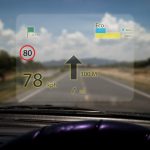 Concentration is crucial when driving a motorcar, and there have been numerous studies into the potential distraction caused by everything from music to mobile phones. One of the more interesting of these was published recently by researchers at the University of Texas at San Antonio.
Concentration is crucial when driving a motorcar, and there have been numerous studies into the potential distraction caused by everything from music to mobile phones. One of the more interesting of these was published recently by researchers at the University of Texas at San Antonio.
They explored the impact wearable technology could have on the concentration of drivers. For instance, could texting using a wearable device distract the driver as much as texting from a mobile phone?
Distractions on the road are a huge problem, with estimates that around 1/4 of car accidents are attributed to some form of distraction, or in other words, nine deaths every day in the United States alone.
Distracted driving
The researchers created a simulated environment where volunteers could be safely distracted whilst driving. At various times, they were tasked with driving whilst using either a smartphone or a Google Glass headset, with a range of messages sent to both. The simulator was then capable of capturing deviations of the steering wheel, and whether the vehicle drifted out of its lane.
“We found that the Google Glass distracts the driver slightly less,” the authors say. “But that also gave the participants a false sense of safety.”
For instance, the device was quicker and responsive to voice controls, but it also encouraged higher engagement levels, which tended to wipe out any safety benefits.
A few years ago a similar question was posed in a study exploring the impact of augmented windscreens on driver concentration levels.
The research saw two experiments conducted to measure the impact augmented windshields had on our attention. Participants were put through a computer based trial to test their ability to identify numbers as quickly as possible. Some of these tests included a secondary distraction, with participants asked to report whether they saw the distraction or not.
The results showed that we are generally pretty alert, but this dropped considerably when the distraction was added. What’s more, a decent number of people failed to even spot the distraction, despite their accuracy falling.
This is likely to be intensified in a driving situation as even more is demanded of us. This often requires us to both identify unusual events and respond to them rapidly and appropriately.
“It would be necessary to distinguish, for example, between warnings of a collision and a recommendation to make a turn,” the authors say. “Otherwise competing warnings may be more dangerous than no warning at all.”
With most countries legislating against the use of mobile phones whilst driving, it’s perhaps time for the rules to updated to reflect new technologies.